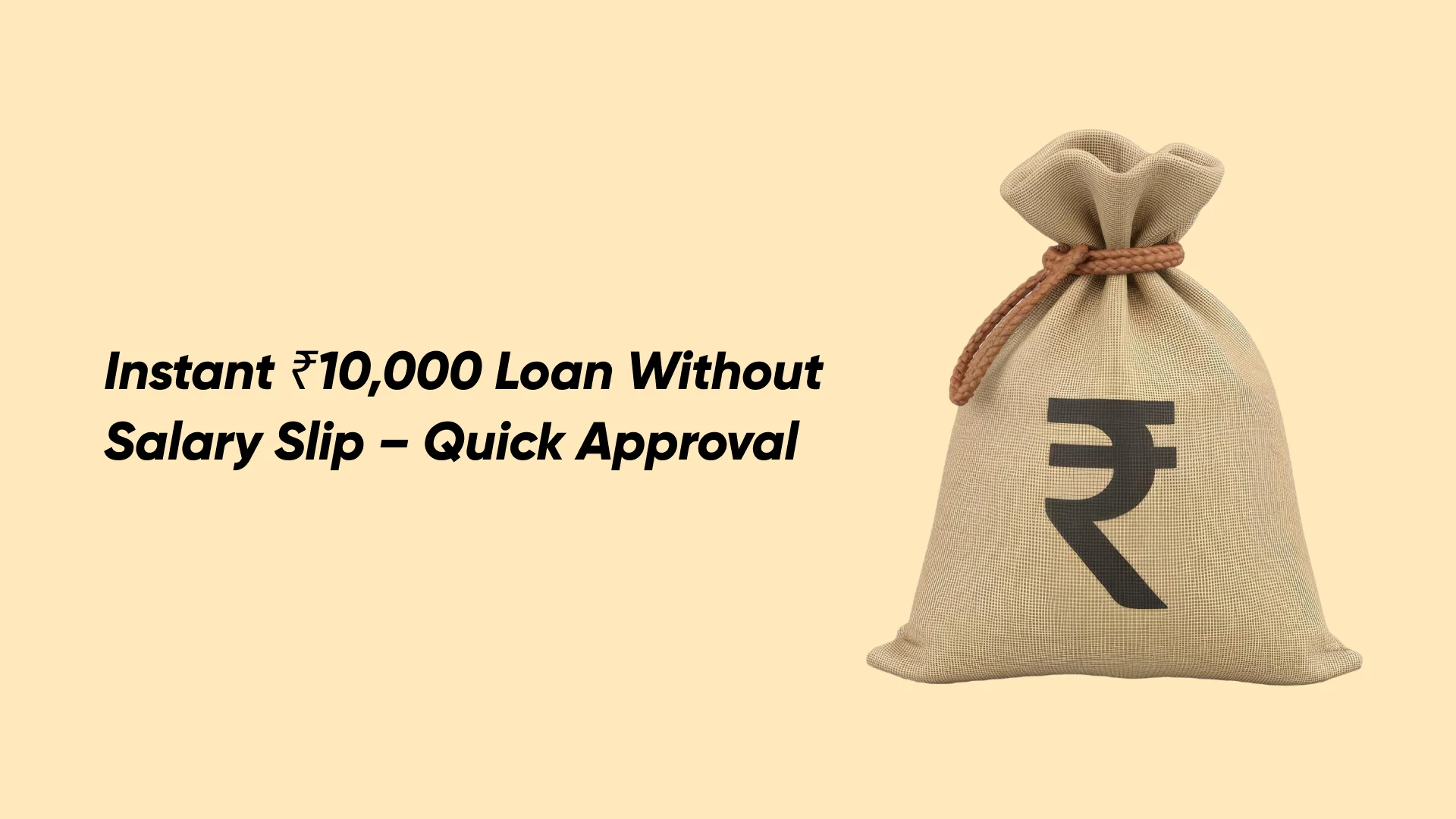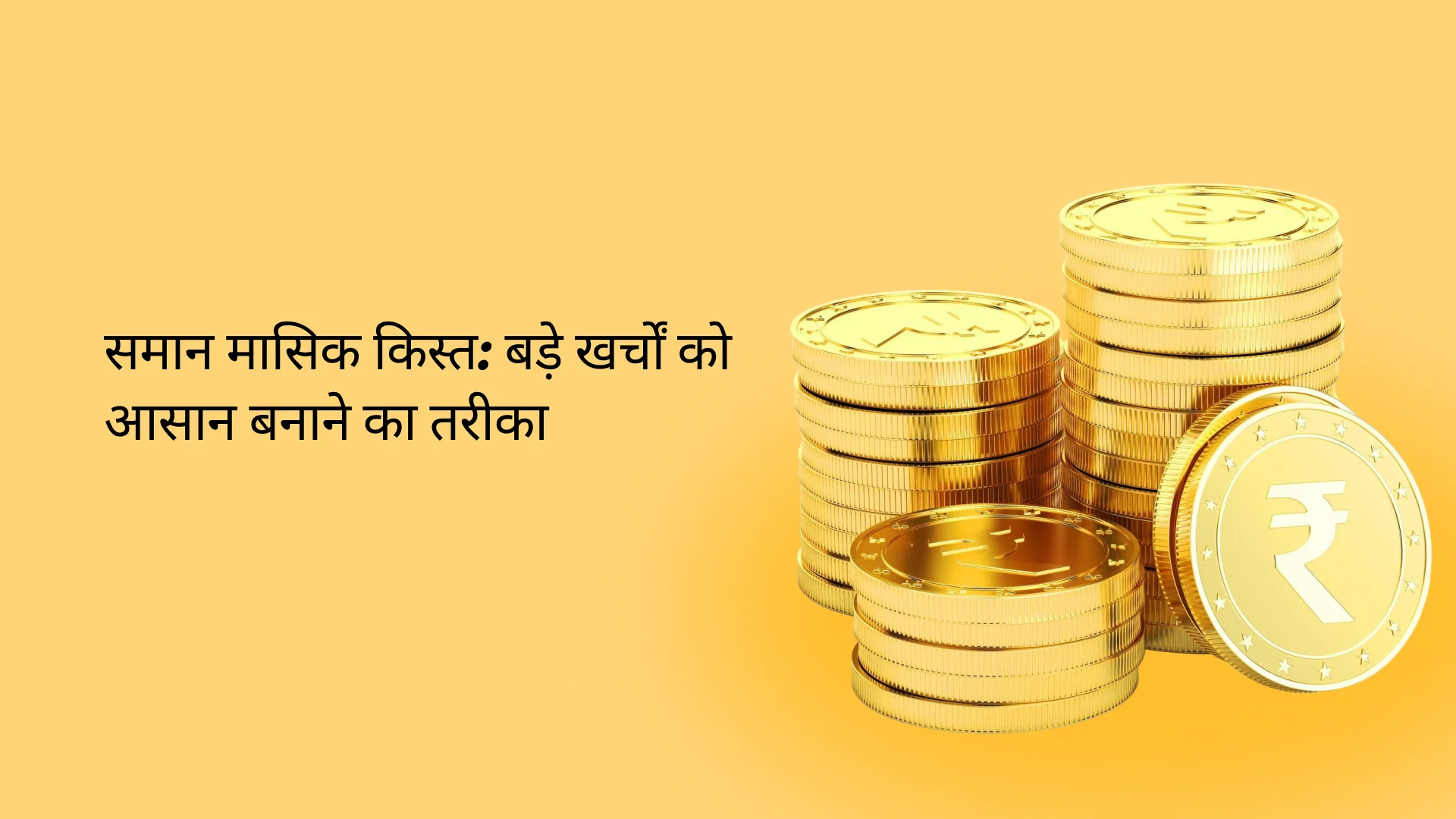Loan vs. Overdraft: A Comprehensive Comparative Guide

Loan vs. Overdraft, which one should you choose? Loans and overdrafts are two common options for borrowing but they work differently. A loan gives you a fixed amount with structured repayments, while an overdraft lets you borrow flexibly when needed. Understanding the features of each will help you decide on which option is best suited for your financial needs.
In this guide, we’ll compare their features, benefits, and drawbacks so you can make an informed decision as per your financial goals.
Table of Contents
ToggleWhat is a Loan?
A personal loan is an unsecured loan. This means that no collateral is required to avail this type of loan. Lenders typically have eligibility criteria when they offer personal loans like good credit score and minimum monthly income. The borrower has to repay the loan amount at a fixed interest rate and tenure.
Personal loans can be used for a number of reasons like emergency expenses, medical bills, debt consolidation, home repairs, gadgets, weddings, upskilling etc.
What is an Overdraft?
An overdraft (OD) is a short-term credit facility provided by banks. It allows individuals and businesses to withdraw more money than what is available in their account, up to a set limit. This approved limit is called an overdraft, and interest is charged only on the amount used. They typically offer this facility to their current account holders, savings account holders, and those with fixed deposits. Interest is charged only for the amount used and the limit gets renewed every 12 months.
Key Differences Between Loan and Overdraft
These loans and overdrafts both offer a form of credit; however, they differ in their structure of payments and usage. Here are the difference between a loan and overdraft:
Factors | Loan | Overdraft |
Meaning | A loan is borrowed capital or fund. | It is a type of credit line facility |
Term | Loan is offered for a long-term than an overdraft | Overdraft is offered for short-term |
Loan Amount | When you opt for a loan, you get a full loan amount at the beginning. | When you opt for an overdraft, you can utilize the amount whenever you need it. |
Interest | Interest is charged on a monthly basis | Interest is charged on a daily basis |
Interest Rate | Interest rate is charged on the loan amount | Interest rate is charged on the utilized amount |
Repayment | Loans repayment is done via EMIs | Overdraft repayment is done via cash or bank account deposits |
Must have an account with the bank | No | Yes |
Also Read: Personal Loan Overdraft Facility
Loan vs. Overdraft: Which One to Choose?
If you are debating overdraft vs personal loan, it is important to understand their features and assess your financial requirements and goals.
Criteria | Loan | Overdraft |
Suited for | Loan is best for a large, planned expenses like (home loan, car loan, business loan) | Overdraft is best for short-term financial requirements |
Disbursement | The full amount given at once | The amount can be withdrawn as needed, up to the approved limit |
Repayment | Fixed EMIs over a set tenure | Flexible repayment, no fixed EMIs |
Interest Calculation | Charged on the entire loan amount | Charged only on the amount used |
Tenure | Long-term, typically around 1-5 years | Short-term, usually renewed annually |
Eligibility | Based on income, credit score, and job stability of borrower | Based on bank relationship (account holders), income proof, or collateral (FD, property) |
Flexibility | Less flexible than OD. It has fixed term payment | More flexible than loans. You can borrow & repay anytime |
Collateral | Required for secured loans | Can be secured (FD/property) or unsecured |
Cost | May have lower interest rates | Higher interest but only on the used amount |
The best choice depends on your financial needs and situation:
Choose a Loan: If you need a large amount for a planned expense, like buying a car or home.
Choose an Overdraft: If you need urgent cash, to cover medical bills or business expenses, and can repay it quickly.
Advantages and Disadvantages of Personal Loans
Advantages of Personal Loans
Affordable Option: When you compare interest rates, personal loans offer lower interest rates than credit cards and overdrafts.
Quick Disbursal: Personal loans have a quick application process & disbursal. Once the loans get approved, the loan amount is directly deposited in your account.
Structured Repayment: Loan repayment is made in fixed monthly instalments on a set due date. This makes it easier to manage finances.
Usage Flexibility: A personal loan can be used for varied personal usage like travel, medical bills, gadgets or even upskilling courses.
Debt Consolidation: If you have any high-interest small-amount loans like credit card bills or education loans, you may opt for debt consolidation with a personal loan.
No Collateral Required: A personal loan is a type of unsecured loan which means that you need not submit any assets like a car, or fixed deposit (FD) to avail the loan.
Disadvantages of Personal Loans
Fees & other charges: Many personal loans charge a percentage of the loan (2%-6% of loan amount) as the processing fee. There are also penalties for delay in payment or defaults. These are significant charges that can put a strain on repayment.
Rigid Eligibility: Most lenders require borrowers to meet eligibility criteria like a good credit score (650+) and a minimum income. If these are not met, the loan is usually rejected.
Strict Terms: If you have a low credit score, the lender may offer a personal loan at a high interest rate or short tenure.
Advantages and Disadvantages of Overdrafts
Advantages of Overdrafts
Easy Application: The application for an overdraft is easy. Existing account holders need to submit an overdraft form to their banks.
Interest Charged on Utilized Amount: The overdraft facility charges interest only on the amount that you use.
Flexible Repayment: Overdraft has flexible repayment terms. There is no fixed repayment structure. You can repay as per your cash flow.
No Prepayment Charges: There are no added charges on early repayment. You can repay the amount earlier at your convenience.
Disadvantages of Overdrafts
Loan Limit: Overdraft is offered for a small amount depending on the lender and borrower’s credit profile. In case you need a large loan amount, explore other alternatives.
Interest Rate: The overdraft interest rate is higher than the loan interest rate and they keep changing as well. The bank may even increase the interest rate if a borrower defaults on payments.
Only for Account Holder: The overdraft facility is only available to individuals having an account with the bank
How to Apply for a Loan or Overdraft
Choose the Right Option: Decide between a loan (for long-term needs) or an overdraft (for short-term flexibility) as per your financial goals and repayment capacity.
Check Eligibility: Ensure you fulfil the lender’s requirements, such as income and credit score.
Gather Documents: Prepare necessary documents like ID proof, income statements, overdraft form and bank details.
Apply Online or Offline: Submit your application through the bank’s website or visit a branch.
Verification & Approval: The lender will review your application, check your credit history, and approve the amount. In case of an overdraft, a credit limit will be offered based on the credit profile.
Receive Funds: For loans, the amount is disbursed in full at the beginning of the loan term. For overdrafts, funds become available as needed, up to the limit offered.
For a quick personal loan, you can apply online and get up to ₹2 lakhs with a super easy process and fast disbursal at Zype!
Conclusion
Loans and overdrafts are both good borrowing options, but the right choice depends on your financial needs. If you prefer a structured repayment plan for a large expense, a loan is ideal. If you need quick, short-term access to funds for temporary money shortages, then an overdraft may be a good option. Understanding the features and differences of each helps you make a smart borrowing decision that suits your financial situation.
Frequently Asked Questions
What Are The Eligibility Criteria For A Loan And An Overdraft?
Eligibility criteria vary as per the lender. General loan eligibility is based on income, credit score (700+), employment stability, and repayment capacity. Overdraft eligibility requires a bank account with the lender, a good credit score, proof of income, or collateral (FD, property, etc.)
Can I Switch From An Overdraft To A Loan?
Yes, you can switch from an overdraft to a loan, but it depends on your bank’s rules & terms.
What Are The Interest Rates For Loans And Overdrafts?
Loan interest rates range from 8% to 18% p.a., while overdraft rates vary from 10% to 24% p.a., depending on the lender and credit profile.
Are There Any Hidden Charges In Overdrafts?
Yes, there may be hidden charges associated with an overdraft, such as foreclosure charges, renewal charges, and penal charges. Check with your lender to understand these charges.
How Does Repayment Work For Loans Vs. Overdrafts?
Loan repayment works with fixed EMI payment whereas overdraft repayment is flexible with interest charged only on the amount utilized.
What Is The Difference Between A Demand Loan And An Overdraft?
Demand Loan entails a loan amount that must be repaid on the lender’s demand or within a short tenure, with fixed or flexible payments. Overdraft is a credit facility that allows you to withdraw funds up to a limit with flexible repayment. You only pay interest on the amount used.
What Is Better, OD Or Term Loan?
Term loans are better suited for long-term borrowing whereas overdrafts are more suited to short-term financial needs.
Is Overdraft Good Or Bad?
It depends on how you use it. It is a good option if you need urgent funds and can repay them quickly. It may not be a good option if you rely on it for the long term, as high interest rates (10% – 24% p.a.) can add up.
YOU MAY ALSO LIKE

Search by posts
Recent post
-
 Instant ₹10,000 Loan Without Salary Slip – Quick Approval
Instant ₹10,000 Loan Without Salary Slip – Quick Approval
-
 समान मासिक किस्त: आपकी वित्तीय खर्चों को आसान बनाने वाला तरीका
समान मासिक किस्त: आपकी वित्तीय खर्चों को आसान बनाने वाला तरीका
-
 Apply for 50000 Rupees Loan Urgently: Get Disbursed in Few Minutes
Apply for 50000 Rupees Loan Urgently: Get Disbursed in Few Minutes
-
 How to get Instant Loan on Aadhaar Card without Salary Slip
How to get Instant Loan on Aadhaar Card without Salary Slip
-
 How to Apply for a Rs. 25,000 Loan on an Aadhaar Card?
How to Apply for a Rs. 25,000 Loan on an Aadhaar Card?
Categories
- Blog (6)
- Credit History (36)
- Credit Line (7)
- Festive (4)
- Finance (15)
- Mutual Fund (19)
- Personal Loan (276)
- Tax (8)
- Zype (4)













